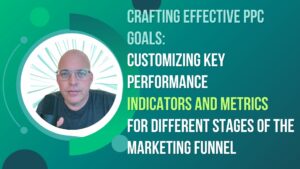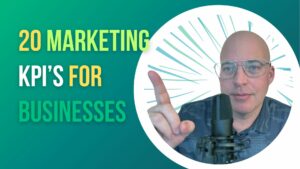Since a significant portion of online shopping begins with search engine queries, implementing a well-rounded SEO strategy is non-negotiable for gaining visibility, attracting high-quality traffic, and boosting conversions. The objective is to provide an all-encompassing SEO blueprint that addresses keyword research, on-page and technical SEO, off-page activities, local search optimization, content marketing, performance measurement, and adaptations for seasonal events. This multi-faceted approach aims to improve search engine rankings and enhance user experience and engagement, translating to increase ecommerce sales.
Keyword Research
Identifying Target Keywords
The cornerstone of any SEO strategy is identifying the right target keywords, which serve as the bridge connecting your products to potential customers. Tools such as Google Keyword Planner and SEMrush are indispensable for this phase, offering insights into keyword search volumes, trends, and relevance. These platforms allow you to generate lists of possible keywords based on your product offerings, target demographics, and competitors, helping to lay a solid foundation for your SEO endeavors.
Analyzing Keyword Competition
Once a list of potential target keywords is at hand, the next step is to evaluate how competitive these terms are in the search landscape. Key metrics include search volume, keyword difficulty, and the current domain authority of ranking websites. Understanding these parameters assists in determining the feasibility of ranking for certain terms. You can select achievable and impactful keywords for your Ecommerce business by balancing high search volume and reasonable competition.
Long-Tail Keywords
Long-tail keywords, typically three to four words long, are pivotal in capturing more specific, often lower-funnel, search queries. These keywords may have lower search volumes but often exhibit higher conversion rates as they target users further along in their decision-making process. Tools like Google’s “People also ask” section or platforms like Answer the Public can help identify relevant long-tail keywords. Incorporating these into your SEO strategy can help you tap into niche markets and elevate the conversion rate, thus contributing to higher sales.

Meta Descriptions
Meta descriptions are concise summaries of a web page’s content displayed under the title tag in search engine results. A well-crafted meta description can significantly impact click-through rates, making it a valuable component of your SEO strategy. Best practices include incorporating target keywords, maintaining a length of around 150-160 characters, and crafting compelling language to encourage clicks. Making each meta description unique is also advisable to avoid duplicate content issues.
Alt Text for Images
Alt text is the textual description displayed in place of an image if the image fails to load or when accessed via screen reading software. Using alt text not only improves website accessibility but also gives search engines more context for indexing your images, thereby indirectly boosting your SEO. When adding alt text, describe the image as specifically as possible and use target keywords sparingly so it appears natural.
Product Descriptions
Regarding Ecommerce, product descriptions serve two masters: potential customers and search engines. Effective product descriptions are not merely informative but are also imbued with relevant keywords to improve search rankings. To balance user experience and SEO, aim for clear, descriptive language that elucidates the product’s benefits and features while naturally incorporating target keywords.
Internal Linking
Internal links are hyperlinks that point to different pages within the same website. Strategic internal linking not only aids in better website navigation but also distributes page authority throughout your site, helping lesser-known pages gain visibility. Implementing an internal linking strategy involves using anchor text that is both descriptive and relevant to the linked page, as well as a balanced distribution of links so as not to overwhelm the user.

Technical SEO
Site Structure
A well-organized site structure improves user experience and search engine crawling, thus positively influencing SEO. A hierarchical arrangement of your content, clear navigation menus, and a logical URL structure make it easier for search engines to index your site and for users to find what they’re looking for. Implementing breadcrumbs and creating an XML sitemap are additional steps that help search engines understand the layout and prioritize the most significant pages.
Mobile Optimization
Given the prevalence of mobile browsing and Google’s mobile-first indexing, optimizing your Ecommerce site for mobile devices is not optional. A responsive design that adjusts to various screen sizes, quick load times on mobile, and easy-to-use navigation can significantly improve user engagement and contribute to better search engine rankings. In today’s market conditions, overlooking mobile optimization can result in lost opportunities and reduced visibility.
Site Speed
A slow-loading site can have detrimental effects on both user experience and SEO. Search engines like Google use page speed as a ranking factor, making it a high-priority issue. Various tools such as Google PageSpeed Insights, GTmetrix, and Pingdom offer valuable insights into your website’s speed and suggest specific areas for improvement. Compressing images, leveraging browser caching, and reducing server response times are some ways to improve site speed.
SSL Certification
SSL (Secure Sockets Layer) certification is no longer just for websites that handle sensitive information; it has become an industry standard. SSL adds a layer of encryption, making the data transfer between your site and the user secure. Search engines prioritize secure sites, denoting them with a padlock symbol in the address bar, which can enhance user trust and SEO rankings.

Off-Page SEO
Backlinks
Backlinks, or inbound links from other websites, act as endorsements in the eyes of search engines, indicating the credibility and relevance of your content. High-quality backlinks from reputable sources can significantly improve your site’s domain authority and search rankings. Tactics for gaining these links include guest blogging, broken link building, and influencer outreach. Be cautious of backlink quality, as links from spammy or irrelevant sites can negatively impact SEO.
Social Signals
Although social media metrics are not a direct ranking factor in many search engines, they indirectly influence SEO. A high level of engagement on social platforms can increase your online visibility and drive more traffic to your site. Consistent posting, social sharing, and interactions on social media platforms can foster community engagement, thereby creating more entry points for people to discover your website or products.
Reviews and Testimonials
Customer reviews and testimonials substantially enhance your site’s credibility and, by extension, its SEO. Positive reviews can significantly influence consumer trust and encourage more clicks and interactions on your site. To gather reviews, consider post-purchase email campaigns asking for customer feedback or incentivizing reviews through small rewards or discounts. Display these reviews prominently on product pages and even in meta descriptions to maximize their impact.
Local SEO
Google My Business
Google My Business (GMB) is a fundamental tool for local SEO, acting as a digital storefront that appears when users search for businesses like yours in a specific geographic area. Setting up and optimizing your GMB profile involves claiming your business, verifying the details, adding high-quality images, and keeping information like business hours up-to-date. Regularly updating your GMB with new photos or posts can improve visibility and encourage user interaction.
Local Keywords
Local keywords include geographic locations or phrases like “near me.” These keywords are instrumental in capturing local search traffic. You can use Google Keyword Planner or SEMrush to identify them, filtering by your target location. Once identified, incorporate these terms into your site’s metadata, content, and local business listings.
Local Listings
Local business listings, such as Yelp or Yellowpages, are additional platforms where a local audience can discover your business. These listings not only improve your online presence but can also add valuable backlinks to your site. When setting up local listings, consistency is key. Ensure your business name, address, and phone number are uniform across all platforms.

Content Marketing
Blog Posts
Blog posts can serve as a magnet for potential customers when done right. The key is to focus on topics that resonate with your target audience while being relevant to your products. Think about how-to guides, product comparisons, or industry trends. Not only do these posts offer valuable information, but they also present opportunities to incorporate target and long-tail keywords, thereby enhancing your site’s SEO.
Videos
Videos are an increasingly popular content format that can offer several benefits. Product demos, tutorials, and customer testimonials in video format can be more engaging than text and lead to higher user interaction rates. Search engines also favor videos, particularly if they are well-optimized with titles, descriptions, and tags that include relevant keywords.
User-Generated Content
User-generated content (UGC) offers dual benefits, such as customer reviews or social media posts featuring your products. First, it provides social proof, which can encourage new customers to purchase. Second, it generates additional content that search engines can index, potentially boosting your SEO. Encouraging UGC can be as simple as running a social media contest or offering small incentives for reviews.
Measuring Success
KPIs
Key Performance Indicators (KPIs) serve as quantifiable metrics that help you evaluate the effectiveness of your SEO strategies. Commonly tracked KPIs in Ecommerce SEO include organic traffic, click-through rate (CTR), conversion rate, and customer lifetime value. Monitoring these metrics over time can provide actionable insights into what’s working and needs adjustment.
Analytics Tools
Google Analytics stands as the go-to platform for many when it comes to tracking SEO KPIs. It offers an in-depth look at user behavior, traffic sources, etc. However, other analytics tools like Adobe Analytics or HubSpot can also provide valuable insights and may offer features not available in Google Analytics. Regardless of the platform, the goal is to use these tools to monitor KPIs and adapt your strategies accordingly.
A/B Testing
A/B testing, or split testing, involves creating two versions of a web page, email, or other types of content to see which performs better in terms of a specific metric, like conversion rate. The methodology is straightforward: serve the two versions randomly to an equal number of users and analyze which one performs better. A/B testing is beneficial in optimizing elements like CTA buttons, landing pages, or even meta descriptions for maximum effectiveness.

Seasonal and Event-Based SEO
Holiday Sales
Seasonal peaks like Black Friday, Cyber Monday, or holiday seasons can dramatically affect traffic and sales for an Ecommerce business. To capitalize on these periods, you should adjust your SEO efforts to include holiday-specific keywords or create landing pages dedicated to holiday promotions. Remember that SEO takes time to bear fruit; therefore, initiate these adjustments well before the peak season.
Special Events
Special events such as product launches, anniversaries, or industry-specific occasions also offer opportunities to fine-tune your SEO. Preparation could involve creating event-specific content, optimizing for event-related keywords, or even setting up a dedicated event page on your site. Press releases and partnerships can provide additional channels to disseminate information while earning backlinks that boost your SEO.
Recommendations and Next Steps
A multi-pronged approach is recommended based on the comprehensive analysis of various SEO elements crucial for Ecommerce. Prioritize on-page and technical SEO efforts, such as keyword targeting and site speed optimization, to lay a strong foundation. Concurrently, develop a robust content marketing strategy, including blogs and videos, to engage your target audience. Off-page SEO activities like backlink acquisition and enhancing your Google My Business profile should follow. Leverage analytics tools to monitor key KPIs and make data-driven adjustments. Lastly, don’t overlook seasonal and event-based SEO opportunities to maximize visibility and sales during peak times. This holistic approach aims to create a synergistic effect that should result in increased organic traffic, higher conversion rates, and, ultimately, elevated sales.








